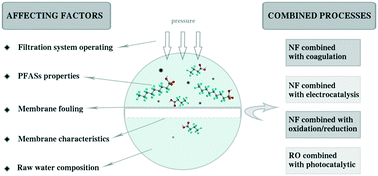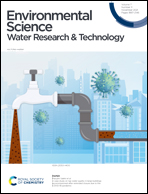The rejection of perfluoroalkyl substances by nanofiltration and reverse osmosis: influencing factors and combination processes
Abstract
The detection of perfluoroalkyl substances (PFASs) in surface waters is concerning because these compounds are bioaccumulative and potentially biotoxic. Therefore, the development of simple, efficient, and energy-saving methods to remove these persistent organic pollutants from water is extremely urgent. Due to the stability and typically low concentrations of PFASs conventional removal processes and some advanced treatment processes (such as coagulation and electrocatalysis) are not suitable for PFAS removal due to their relatively poor removal efficiency or harsh reaction conditions. Membrane processes, such as nanofiltration (NF) and reverse osmosis (RO), can effectively remove multiple substances, are energy-saving, and do not require a phase change. Therefore, these PFAS removal methods show more promise for practical application. This article reviews the current research progress regarding the influence of typical NF and RO factors on PFAS removal. In addition, the research status and prospects of other water treatment processes combined with membrane processes are summarized and assessed.

- This article is part of the themed collection: Environmental Science: Water Research & Technology Recent Review Articles


 Please wait while we load your content...
Please wait while we load your content...